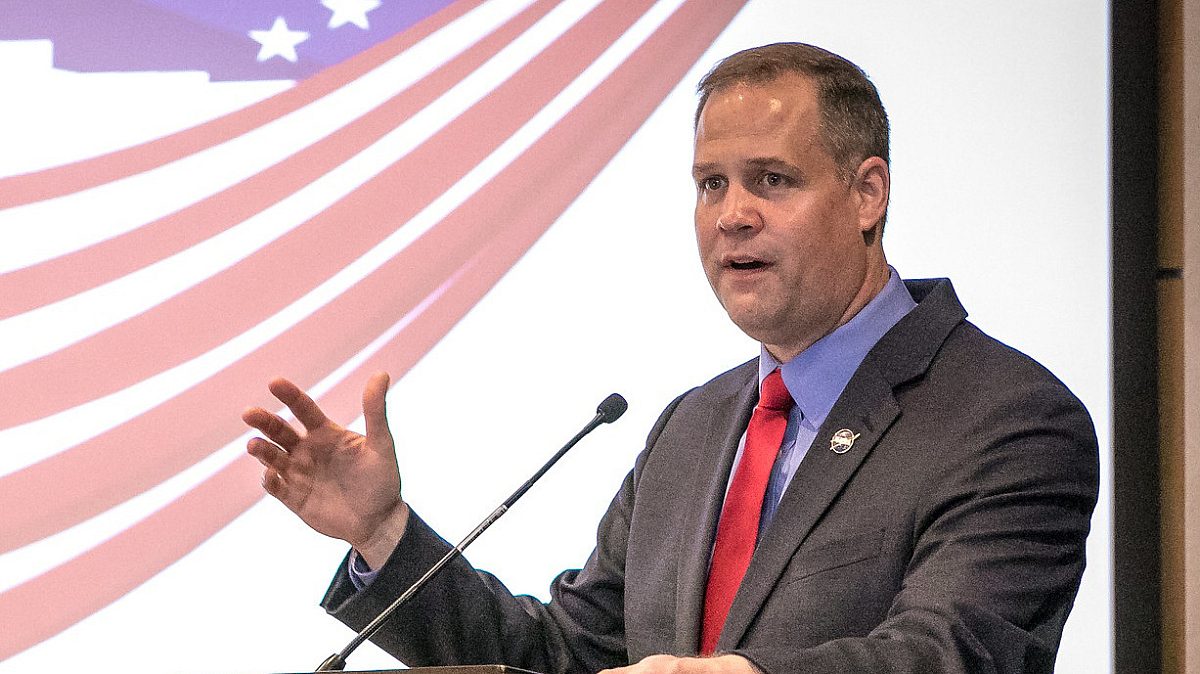From Tranquility Base to the Tractor Seat: How NASA Technology is Advancing Agriculture
Erin Anthony
Director, Communications

photo credit: AFBF
Erin Anthony
Director, Communications
By Bailey Corwine
While most Americans associate NASA with the famed “one small step for man, one giant leap for mankind,” and missions like the Mars Curiosity Rover, the agency is much more than the projects that make headlines around the world. Today, NASA is doing more than ever to advance the human condition on Earth, particularly in the agriculture sector.
In fact, the agency, which receives less than 0.5% of the federal budget, is working on several missions that have major potential to impact the way America’s farmers and ranchers produce food, fuel and fiber for the world.
According to NASA Administrator Jim Bridenstine, the agency is using technology such as satellites and laser detection devices, built for a broad range of purposes, to collect data related to the environment and agricultural production.
“NASA is an amazing agency and the capabilities that we have developed have absolutely transformed the world,” Bridenstine said at a gathering of state Farm Bureau presidents in Washington, D.C. in July. “One of those areas that has been transformed, and is continuing to be transformed, is agriculture. Because of NASA’s technologies and capabilities, and our investments, we are going to be able to feed more of the world than ever before.”
One of these missions is ECOSTRESS, or the Ecosystem Spaceborne Thermal Radiometer Experiment on Space Station, which is attached to the outside of the International Space Station. ECOSTRESS, Bridenstine said, measures the heat coming off the Earth.
“When a plant is not sufficiently irrigated, the stomata close, and when they close, the plant heats up,” Bridenstine said. “We can detect that from space, and when we detect that we can make a very rapid determination, two weeks before you can see it with your eyes, that a plant has stress.”
This has important implications for agriculture, allowing farmers to increase crop yields and reduce risk, Bridenstine said.
“We’re measuring the Earth and the infrared, so we’re measuring the stress of plants from potential under-irrigation,” Bridenstine said.
NASA is also using its technology to measure the snow pack of the Sierra Nevada mountains, which, when melted, is used to irrigate much of the farmland in California and Nevada. The technology, called Light Detection and Ranging, was developed to help map the moon during the agency’s Apollo era.
“So, Apollo applies to ag,” Bridenstine said.
LIDAR technology is used in conjunction with another NASA-developed technology, spectroscopy, to measure how much snow pack has accumulated in the Sierra Nevada range and convert that snow into a water equivalent. These predictions can be used to help farmers and ranchers in snow pack runoff areas better prepare to irrigate when the snow melt arrives, Bridenstine explained.
“It’s important to know when the [irrigation] water is going to show up and to know how much is going to show up,” Bridenstine said. “NASA is working really hard to enable that capability.”
Better-informed irrigation practices could also lead to increased sustainability practices, which would benefit the larger community in more arid regions, such as San Francisco and Los Angeles, California, and Reno and Las Vegas, Nevada.
“They’re going to need more water than ever before,” Bridenstine said.
Increased demand for water, particularly the runoff from the Sierra Nevada range, means that farmers, ranchers and growers will need to make sure they are not using “one drop more than they need,” Bridenstine said.
“We want to make sure we are maximizing every drop of water that is available to the public, so we want to get very precise irrigation measurements,” Bridenstine said.
While these specific missions have the capability to impact agriculture in a very direct way, Bridenstine also wants farmers and ranchers to know the agency’s technology as a whole is improving the way farmers work.
Technologies such as GPS, broadband internet and cable TV are widely used by the American public, yet many Americans do not know that those capabilities were pioneered by NASA. One of those, GPS, recently revolutionized agriculture with the increase in use of GPS-enabled autonomous navigation systems in many modern pieces of equipment.
“That’s NASA technology on your tractor,” Bridenstine said.
Since the agency’s inception in 1958, NASA has worked to send men to the moon, collect scientific data on Mars and launch spacecraft into Jupiter’s orbit. But NASA has also made a significant impact on the way humans live on Earth.
“We have elevated the human condition in ways people do not even think about,” Bridenstine said.
An urban mother clicking on the television, a student at a suburban university logging onto broadband internet and a rural farmer or rancher firing up a GPS-enabled tractor are everyday examples of how NASA technology is changing the world.
Bailey Corwine is an intern in the American Farm Bureau Federation’s Communications Department. She will graduate from the University of Arkansas in December with a degree in agricultural communications.
Trending Topics
VIEW ALL